Abstract
Hurwitz, Charles (Veterans Administration Hospital, Albany, N.Y.) and Carmen L. Rosano. Chloramphenicol-sensitive and -insensitive phases of the lethal action of streptomycin. J. Bacteriol. 83:1202–1209. 1962.—If chloramphenicol is added to sensitive Escherichia coli cells at the same time as streptomycin, the lethal effect of the latter drug is prevented. If the cells receive a prior exposure to streptomycin before the addition of chloramphenicol, the bacteria are then susceptible to killing by streptomycin in the presence of chloramphenicol.
These results are interpreted to mean that the lethal action of streptomycin can be divided into chloramphenicol-sensitive and chloramphenicol-insensitive stages. It is proposed that during the chloramphenicol-sensitive stage, a streptomycin-initiated protein synthesis occurs, and that this protein synthesis must precede the actual killing by streptomycin. Inorganic phosphate has no effect on the chloramphenicol-sensitive phase, but does prevent killing by streptomycin. Evidence is presented arguing against the formation of a leaky permeability barrier as being the primary cause of death of cells exposed to streptomycin.
Full text
PDF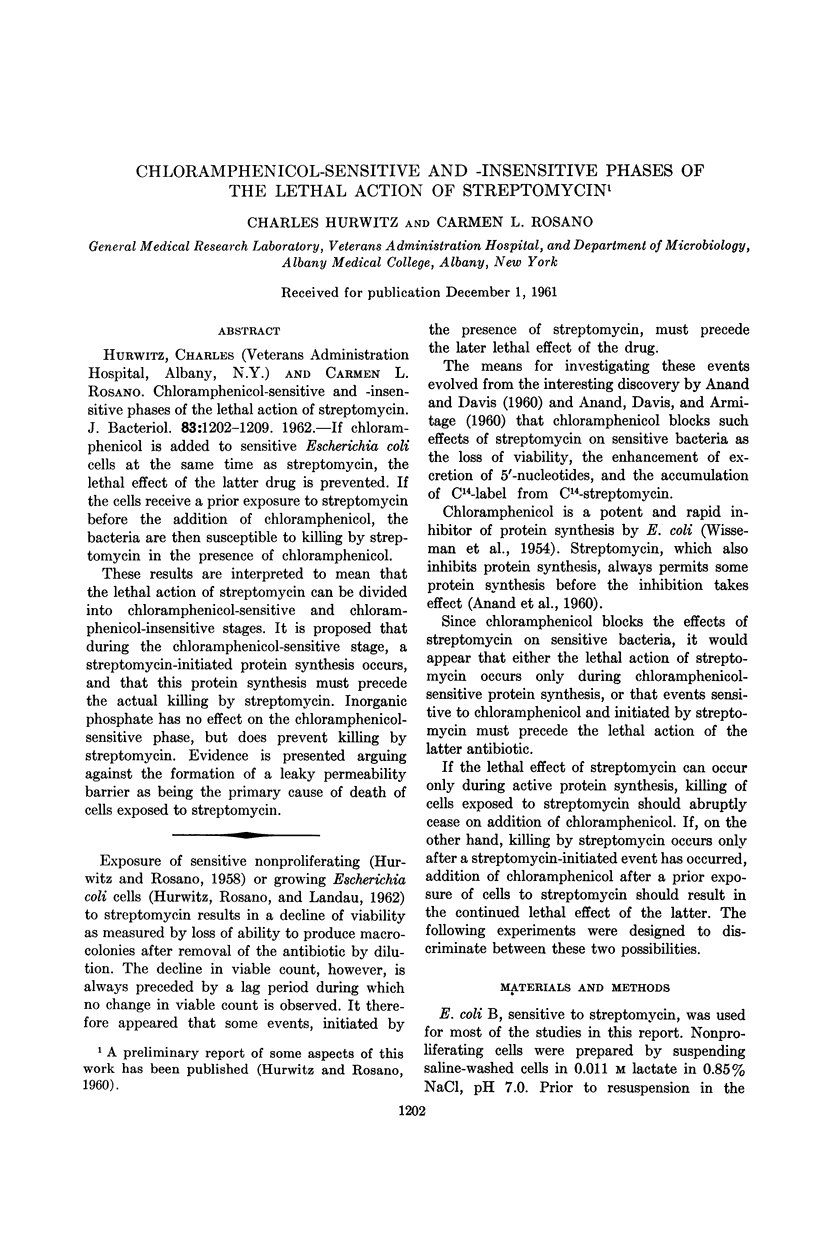
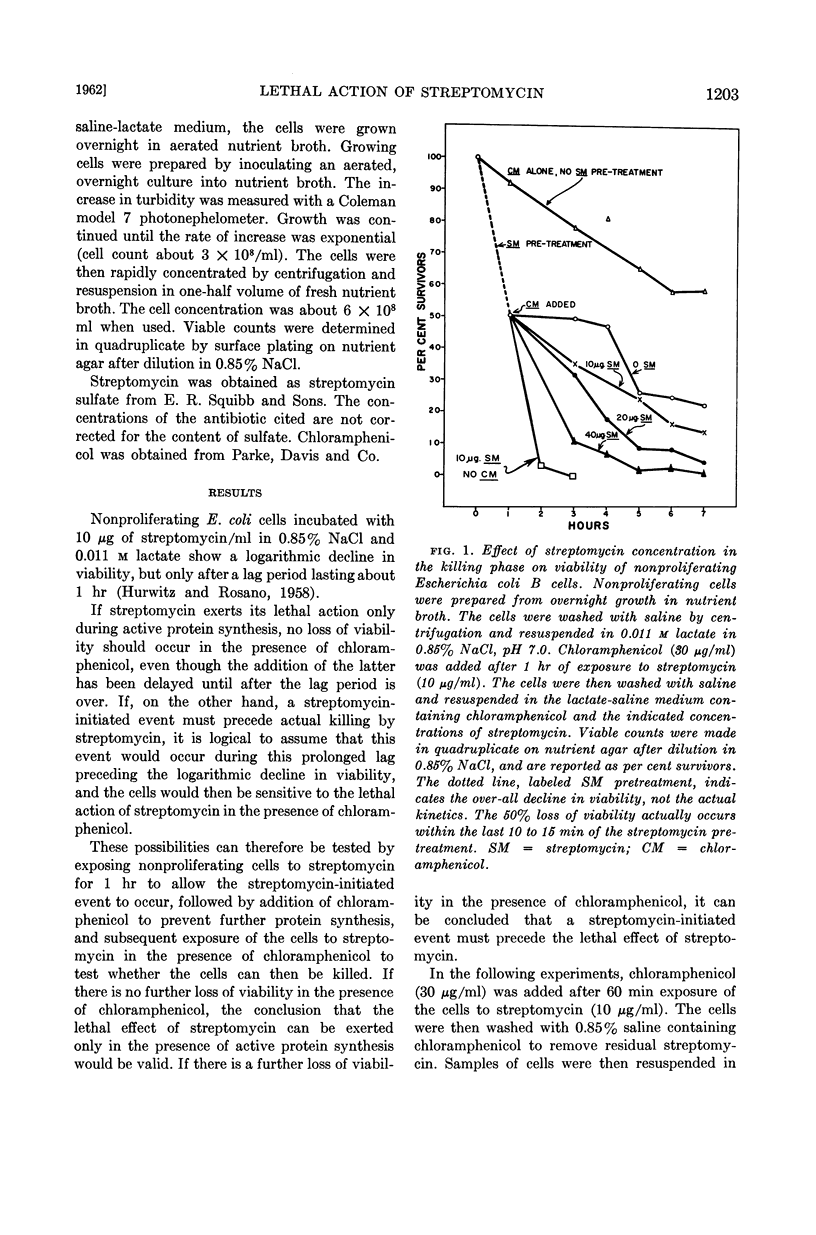

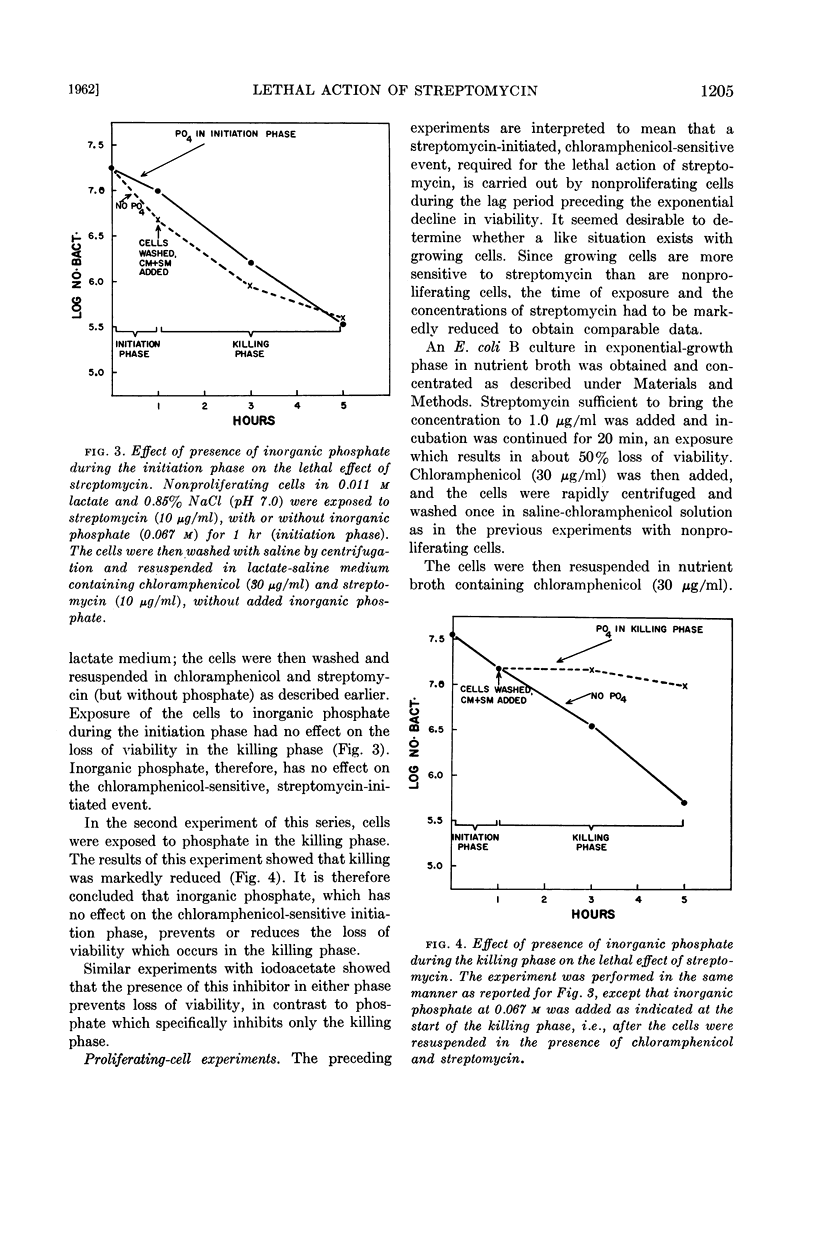
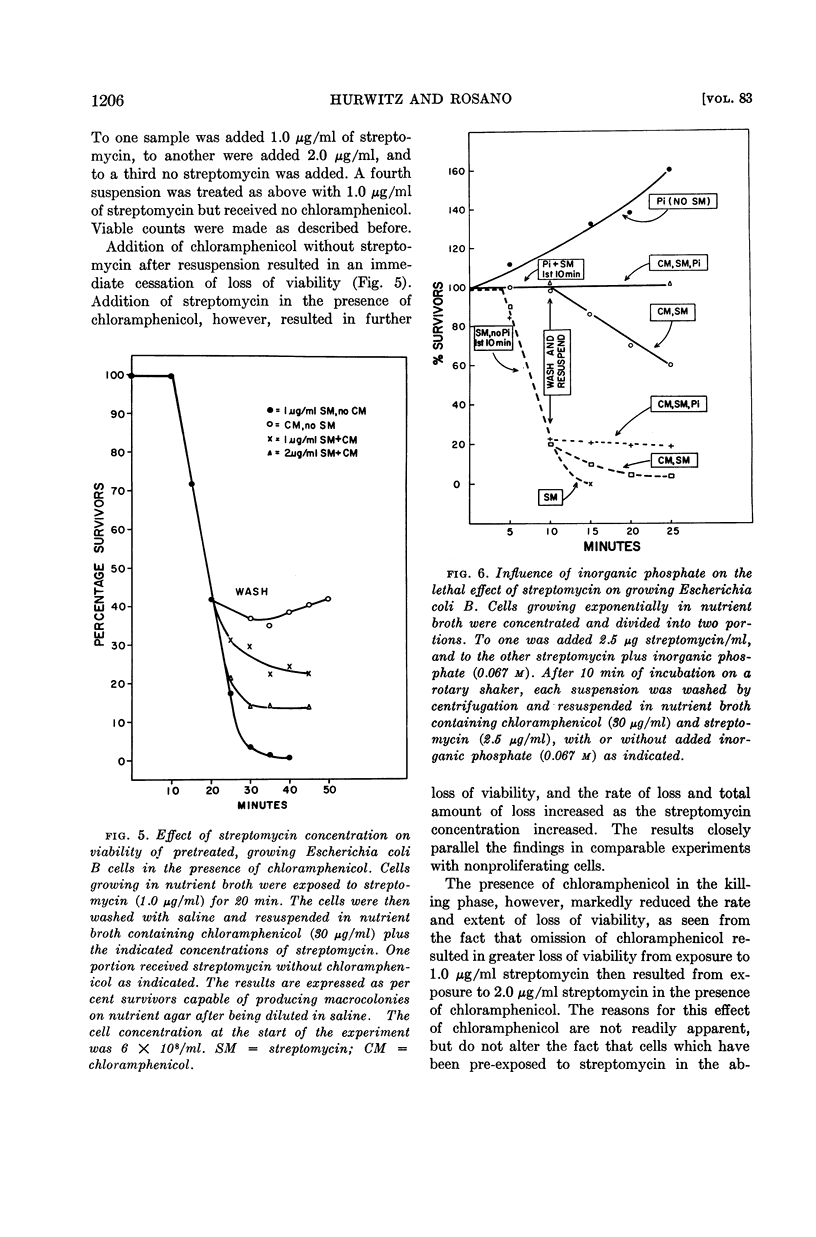
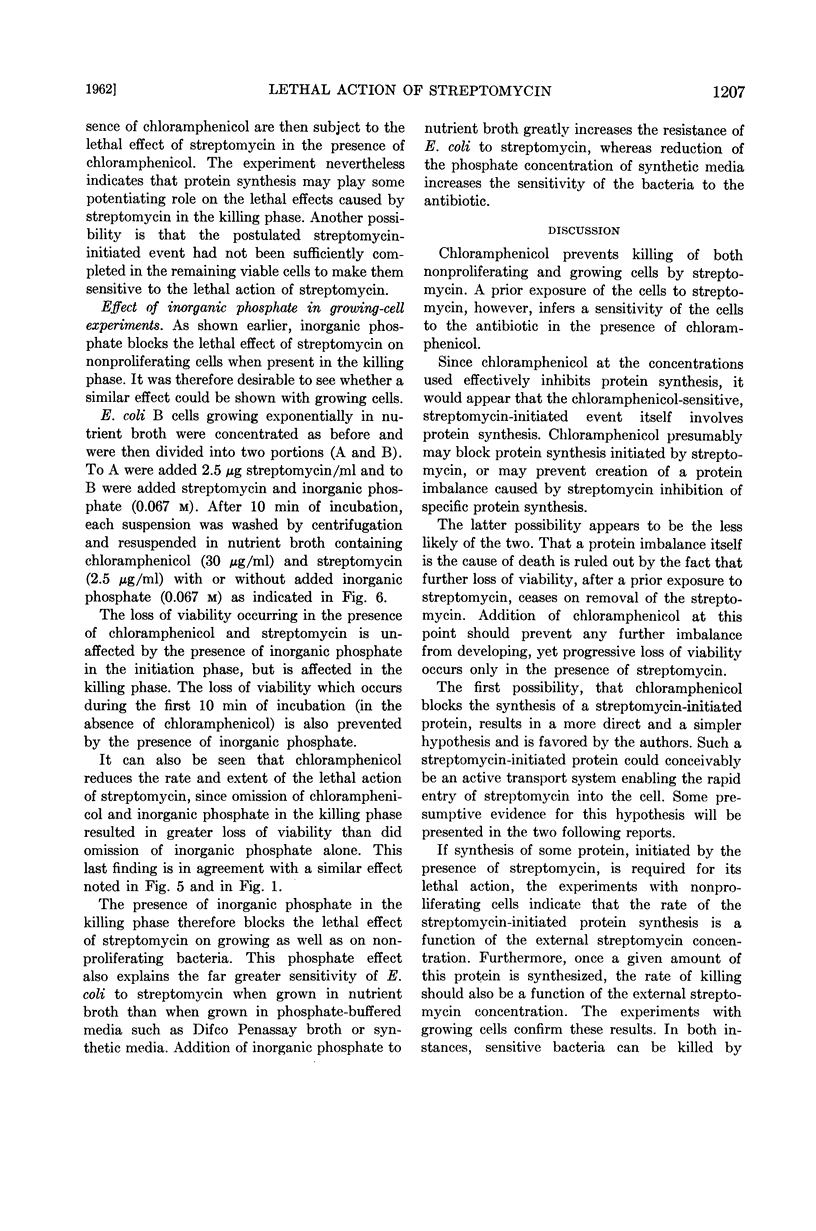
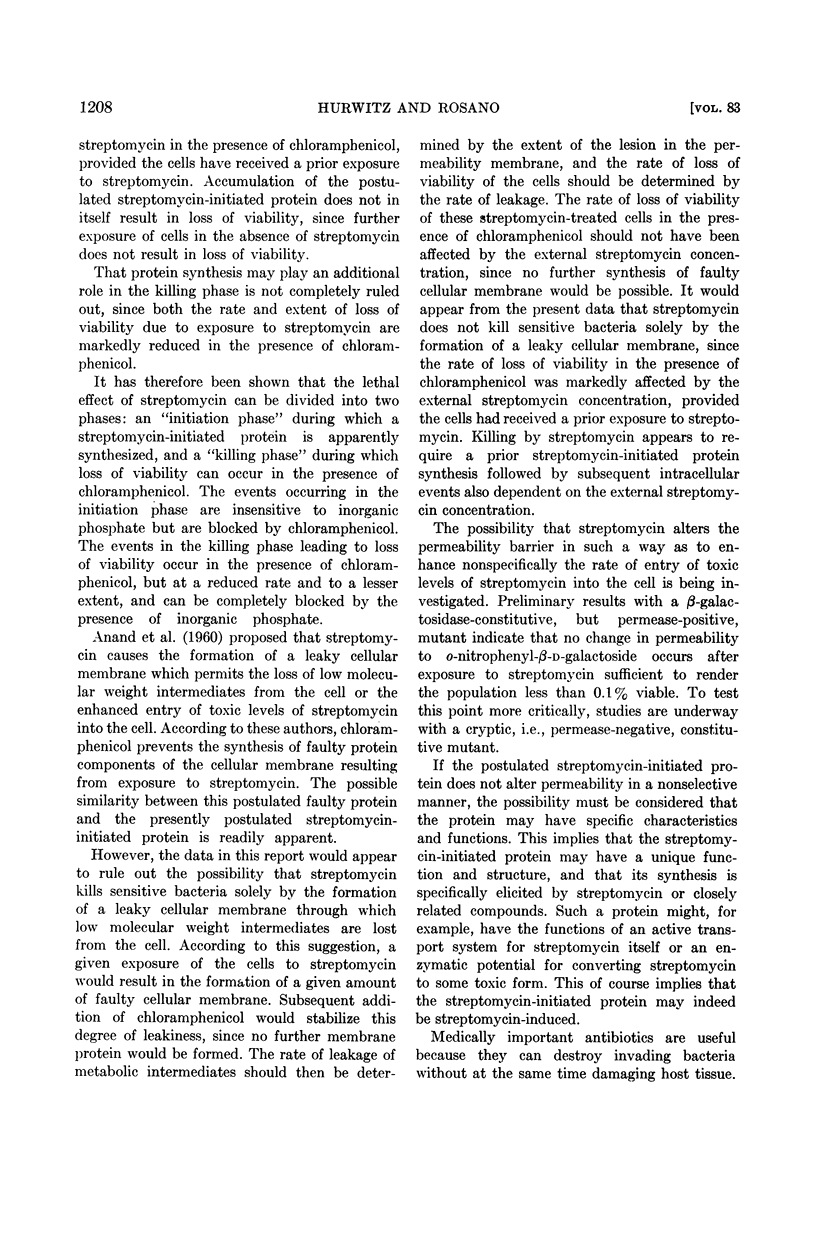
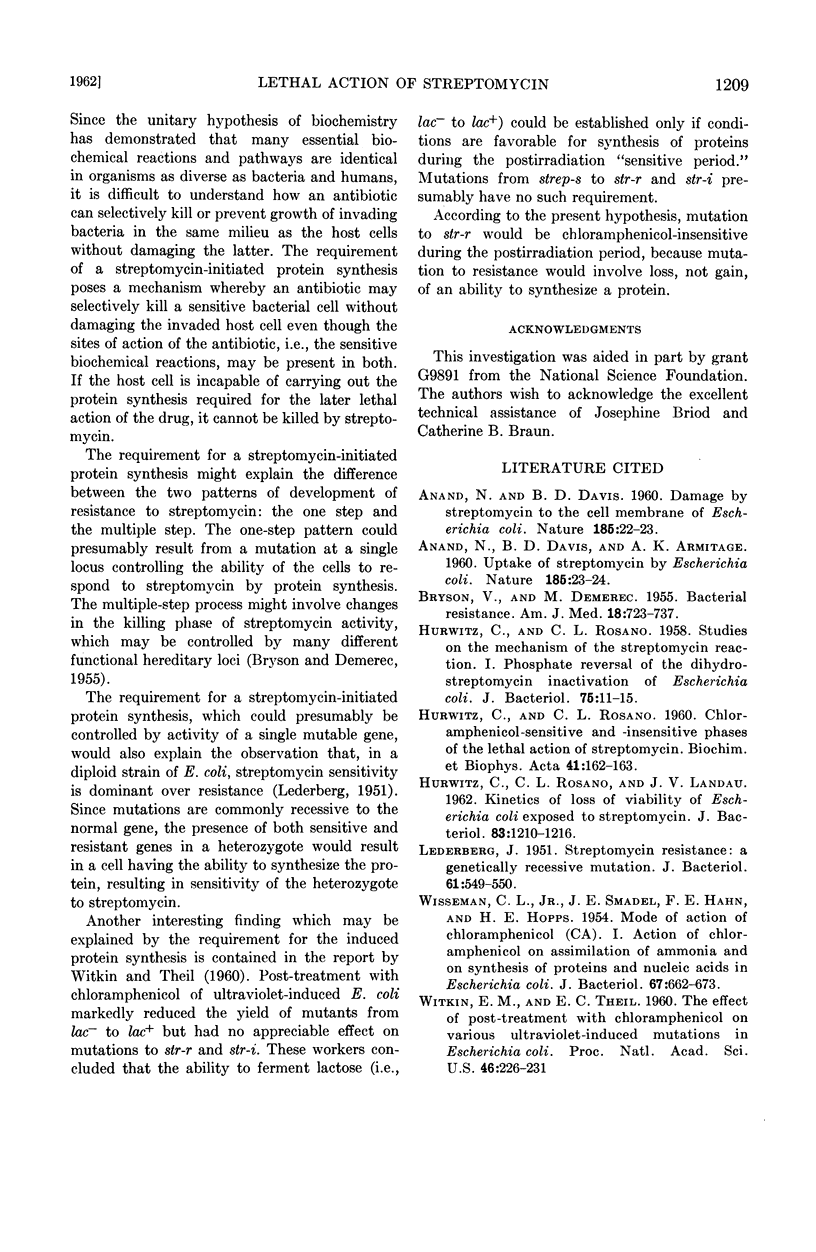
Selected References
These references are in PubMed. This may not be the complete list of references from this article.
- ANAND N., DAVIS B. D., ARMITAGE A. K. Uptake of streptomycin by Escherichia coli. Nature. 1960 Jan 2;185:23–24. doi: 10.1038/185023a0. [DOI] [PubMed] [Google Scholar]
- ANAND N., DAVIS B. D. Damage by streptomycin to the cell membrane of Escherichia coli. Nature. 1960 Jan 2;185:22–23. doi: 10.1038/185022a0. [DOI] [PubMed] [Google Scholar]
- BRYSON V., DEMEREC M. Bacterial resistance. Am J Med. 1955 May;18(5):723–737. doi: 10.1016/0002-9343(55)90187-x. [DOI] [PubMed] [Google Scholar]
- HURWITZ C., ROSANO C. L. Chloramphenicol-sensitive and -insensitive phases of the lethal action of streptomycin. Biochim Biophys Acta. 1960 Jun 17;41:162–163. doi: 10.1016/0006-3002(60)90387-5. [DOI] [PubMed] [Google Scholar]
- HURWITZ C., ROSANO C. L., LANDAU J. V. Kinetics of loss of vibility of Escherichia coli exposed to streptomycin. J Bacteriol. 1962 Jun;83:1210–1216. doi: 10.1128/jb.83.6.1210-1216.1962. [DOI] [PMC free article] [PubMed] [Google Scholar]
- HURWITZ C., ROSANO C. L. Studies on mechanism of the streptomycin reaction. I. Phosphate reversal of the dihydrostreptomycin inactivation of Escherichia coli. J Bacteriol. 1958 Jan;75(1):11–15. doi: 10.1128/jb.75.1.11-15.1958. [DOI] [PMC free article] [PubMed] [Google Scholar]
- LEDERBERG J. Streptomycin resistance; a genetically recessive mutation. J Bacteriol. 1951 May;61(5):549–550. doi: 10.1128/jb.61.5.549-550.1951. [DOI] [PMC free article] [PubMed] [Google Scholar]
- WISSEMAN C. L., Jr, SMADEL J. E., HAHN F. E., HOPPS H. E. Mode of action of chloramphenicol. I. Action of chloramphenicol on assimilation of ammonia and on synthesis of proteins and nucleic acids in Escherichia coli. J Bacteriol. 1954 Jun;67(6):662–673. doi: 10.1128/jb.67.6.662-673.1954. [DOI] [PMC free article] [PubMed] [Google Scholar]


